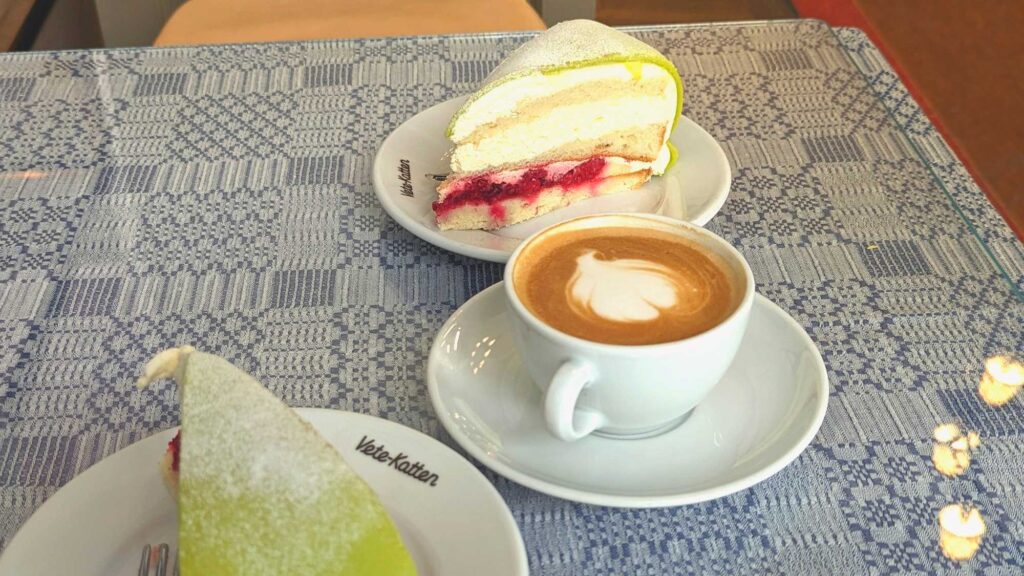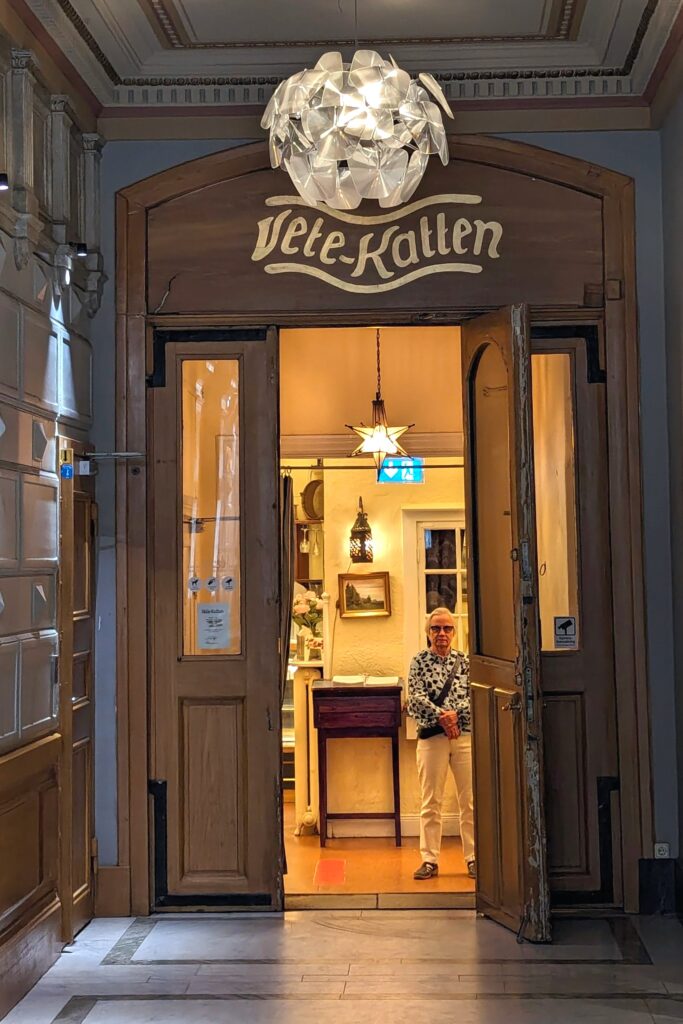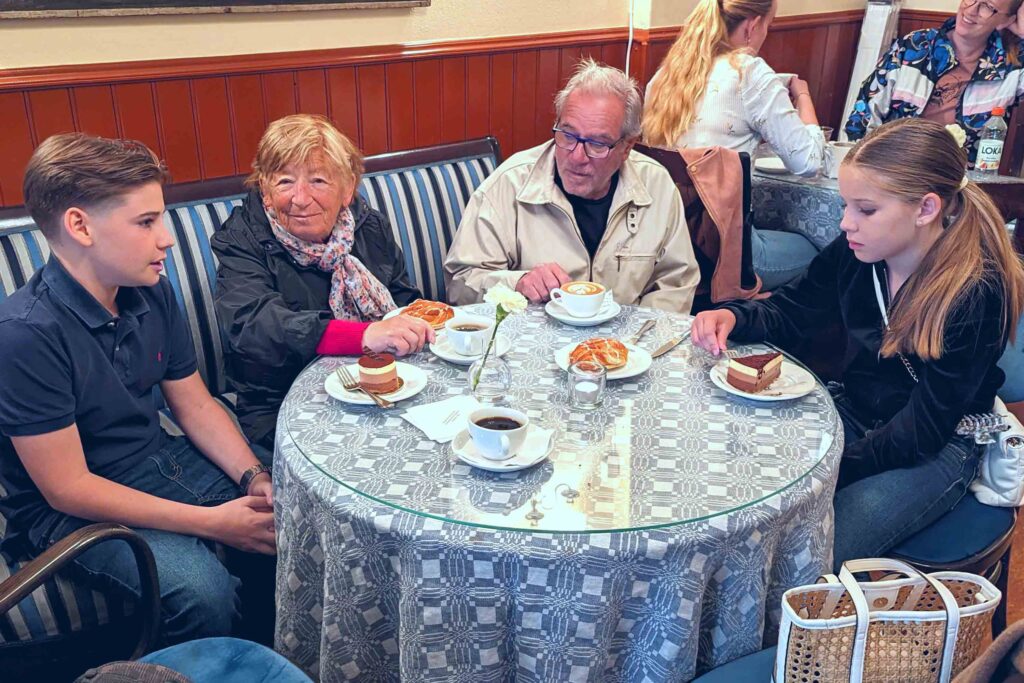
When I was in my late 20s, I lived in Pasadena, California. At least once a week, I would head to the very exotic-seeming Konditori where I would always order the same thing: a beautiful slice of Princess cake.
I left Pasadena and Princess cake behind after a couple of years. I remembered it fondly but never encountered it again in my travels in the United States — or in western or even eastern Europe. It is an understatement to say that I’m delighted to discover that Prinsesstärta is practically the national dessert of Sweden. There are tempting slices and whole cakes at every konditori in town — and there are plenty of them. There are even whole cakes in the grocery stores.
Could the cake be more Swedish?

In the early twentieth century, cookbook author and culinary magician Jenny Åkerström created the dome-shaped confection of vanilla sponge cake layered with raspberry jam, vanilla pastry cream, and whipped cream. She brilliantly topped the whole thing with a layer of green marzipan crowned with a pink rose. Åkerström also was a teacher for the three daughters of Prince Carl, the brother of King Gustaf V. I guess that’s how the cake got its name. I’m sure that the princesses were thrilled. And the cake has stood the test of time. A century later it’s as popular as ever.
I was a little worried that Prinsesstärta might not live up to my memories. For my first taste, I decided to take a break at Vete-Katten (Kungsgatan 55, 08-20 84 05, vetekatten.se). The bakery and cafe was founded in 1928, making it about the same age as the Princess cake itself. I ordered at the counter, found a table in the little warren of rooms and took a delicate bite. Then another and another. My fork penetrated the outer layer of marzipan, cut through a layer of sponge, then through the fluffy whipped cream. Another layer of sponge hid the stiff pastry cream and the decadent, barely sweetened raspberries. Smooth, tart, sweet — it was a swirl of flavors and textures.
I plan to eat my fill. I don’t know when I’ll have another chance.

